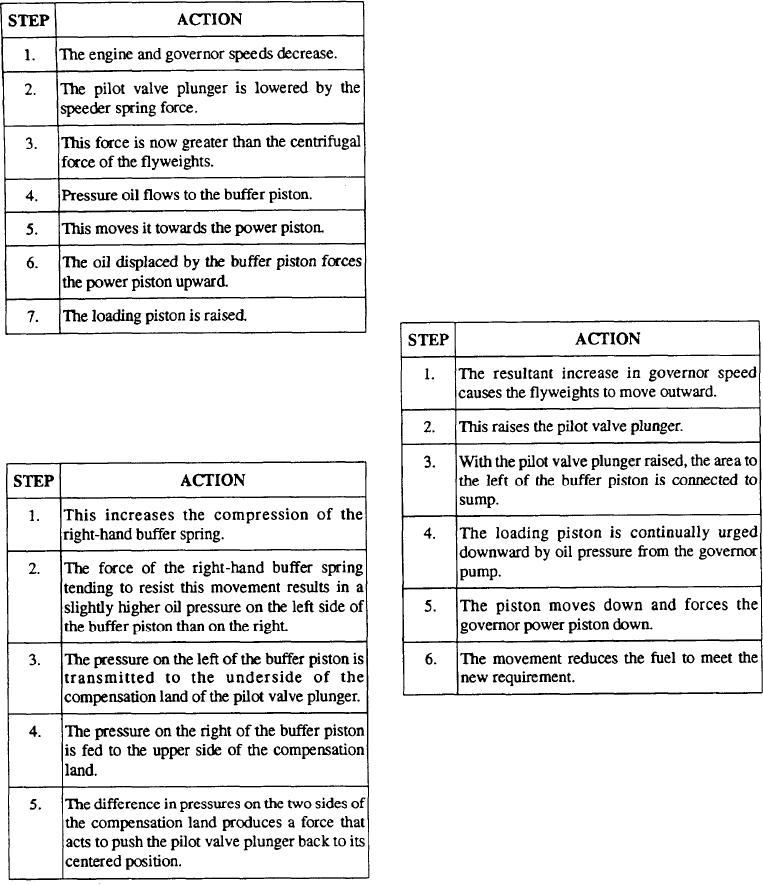
continued increase of speed to normal increases the
centrifugal force developed by the rotating flyweights.
However, this increase of speed to normal does not
cause the flyweights to lift the pilot valve plunger above
center. Oil leakage through the needle valve orifice
equalizes the pressure above and below the
compensation land. This is at a rate proportional to the
return of the engine speed to normal. Then, as the
centrifugal force increases, the compensating force
decreases.
With the pressures above and below the
compensation land equalized, the buffer springs return
the buffer piston to its normal centered position.
When engine load decreases, the following actions
occur:
The terminal shaft is then rotated in the direction to
provide the additional fuel needed for the new load.
The movement of the buffer piston towards the
power piston partially relieves the compression of the
left-hand buffer spring.
Again, differential pressure across the
compensation land helps to recenter the pilot valve
plunger.
The speed at which the governor controls the engine
is determined by the loading or compression of the
speeder spring. This spring opposes the centrifugal force
of the flyweights. The standard EGB-2P has a
speed-adjusting screw in the top cover, as shown in
figure 9-13.
When the terminal shaft has rotated far enough to
Speed Droop
satisfy the new fuel requirement, the pilot valve
recenters. This is caused by the differential force on the
Speed droop is used in governors to divide and
compensation land plus the centrifugal force of the
rotating flyweights. This happens even though the
balance load between engines or turbines driving the
same common load or driving generators paralleled in
engine speed has not returned complete] y to normal.
an electrical system. Speed droop is defined as the
Power piston and terminal shaft movement stops. The
9-19

